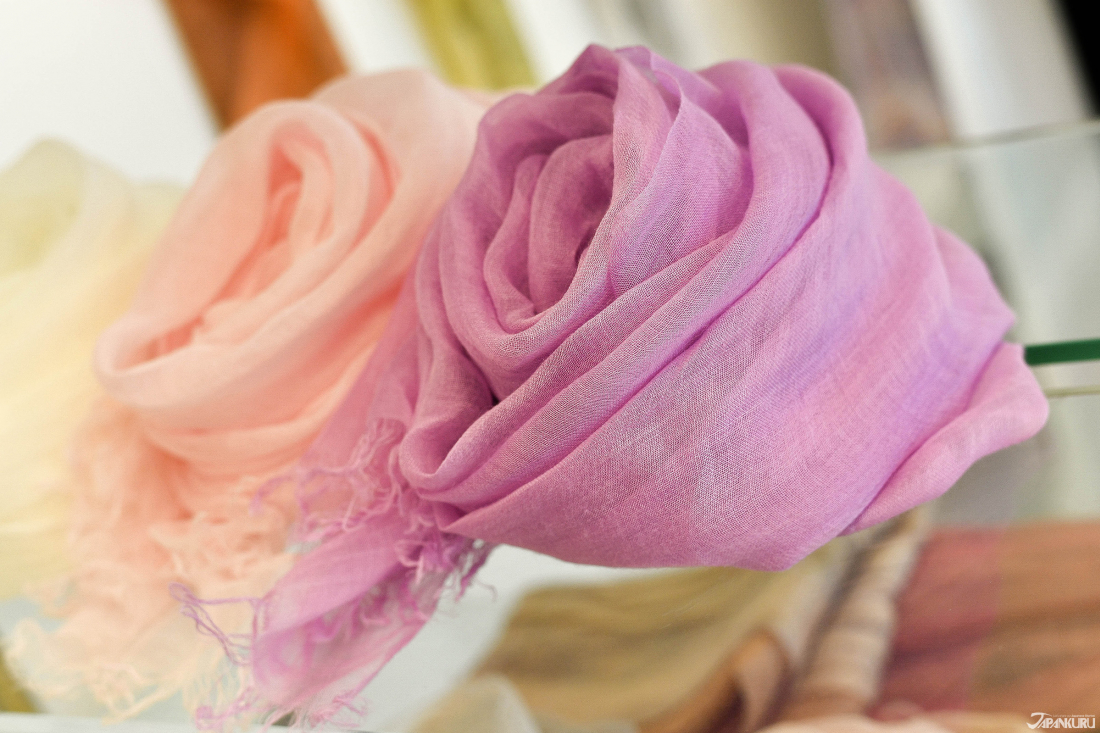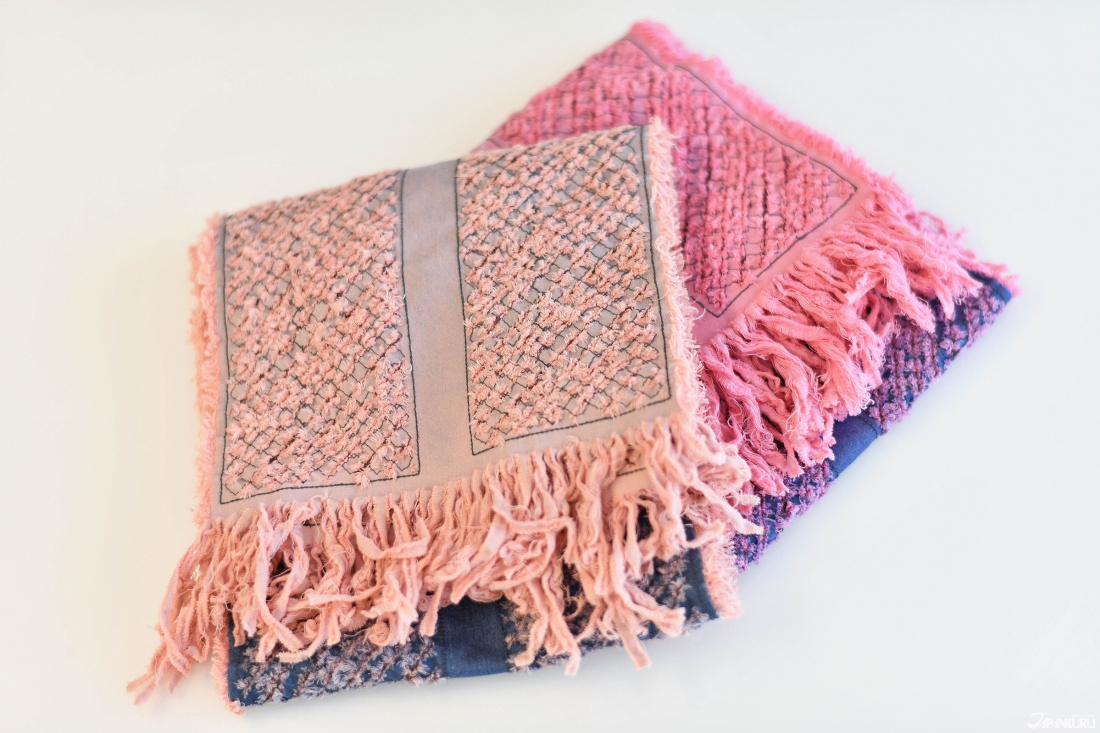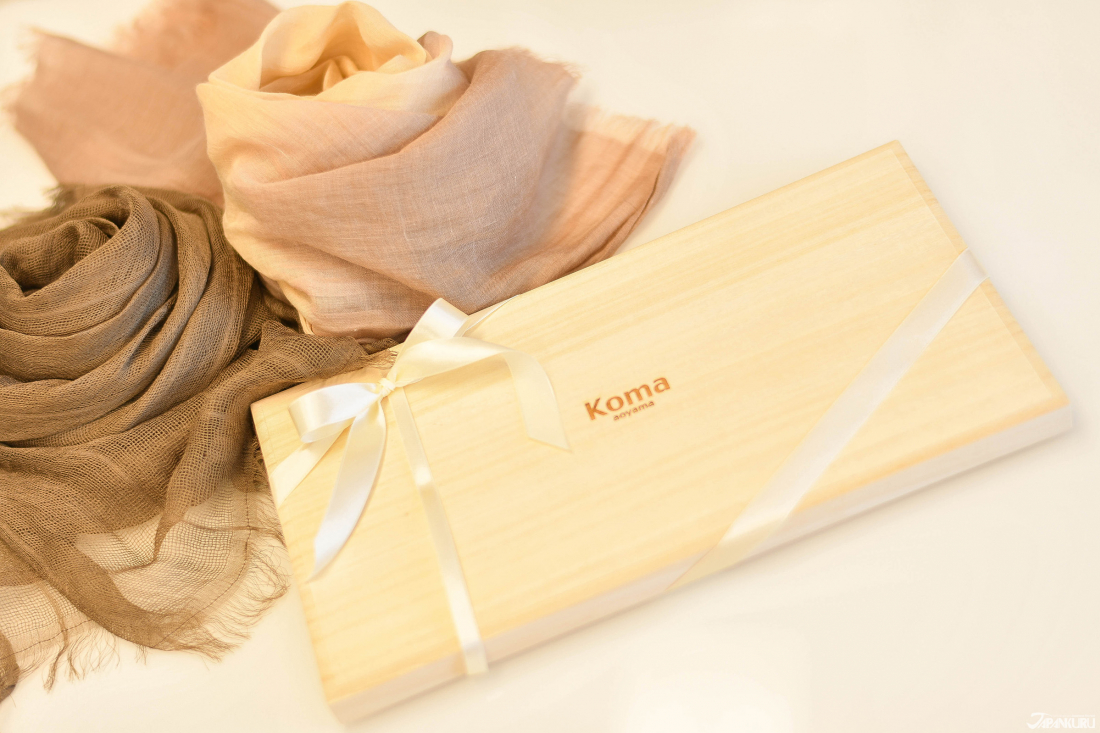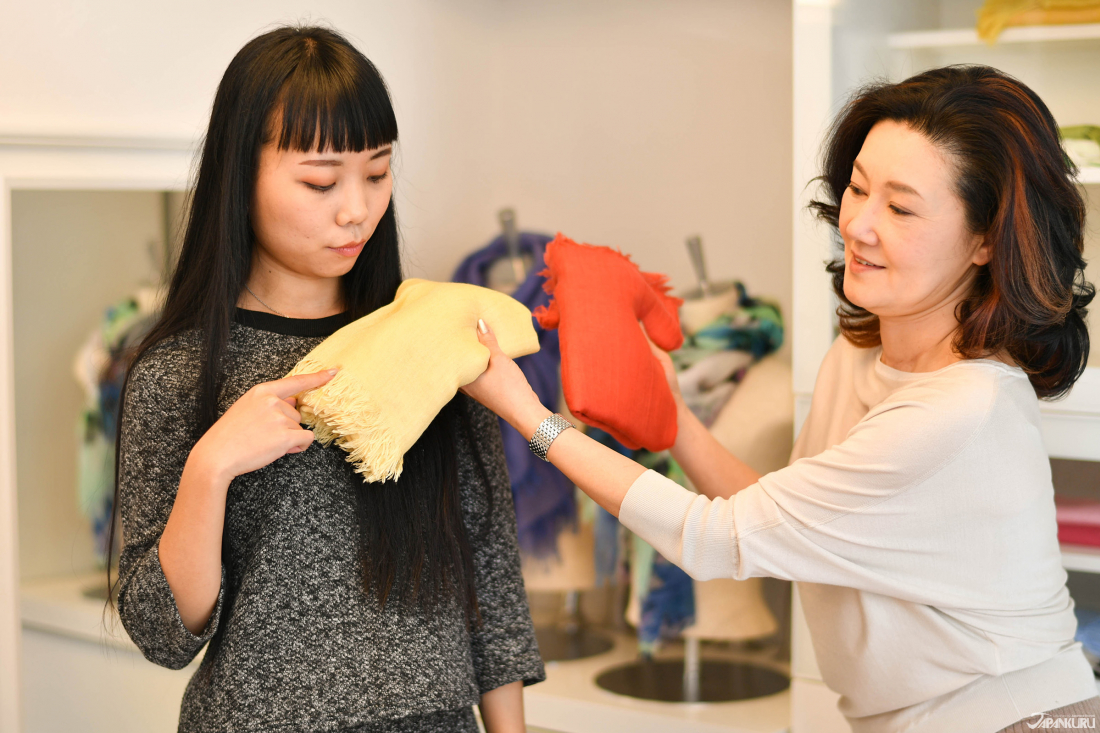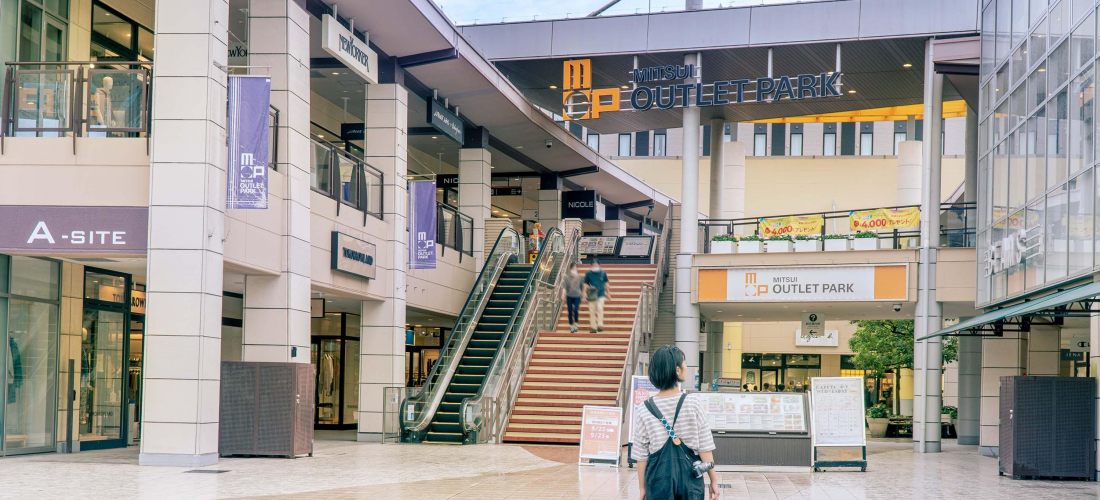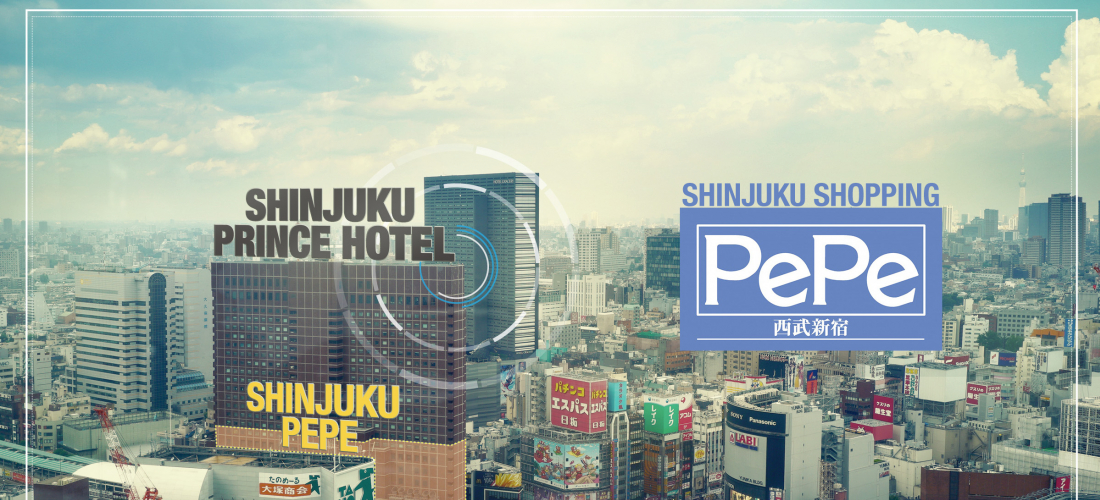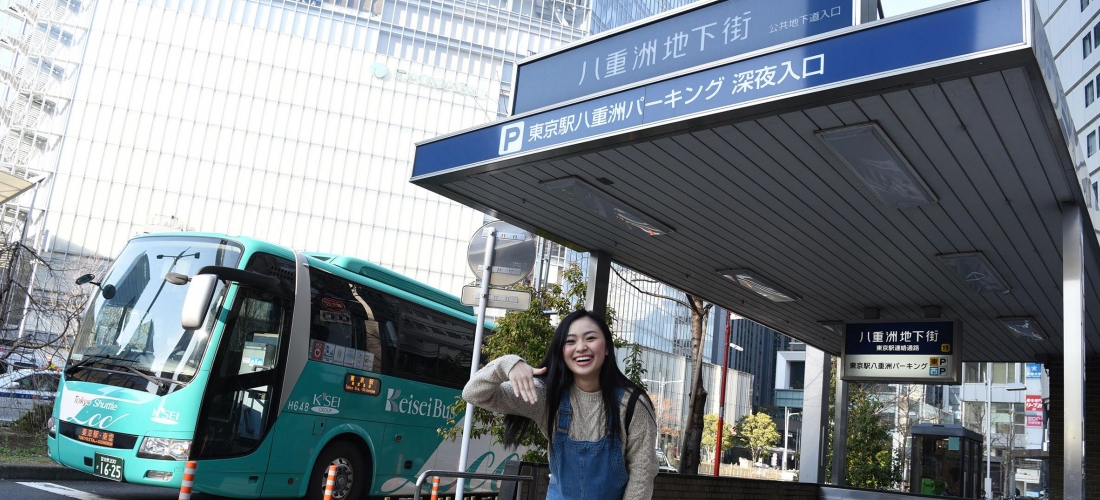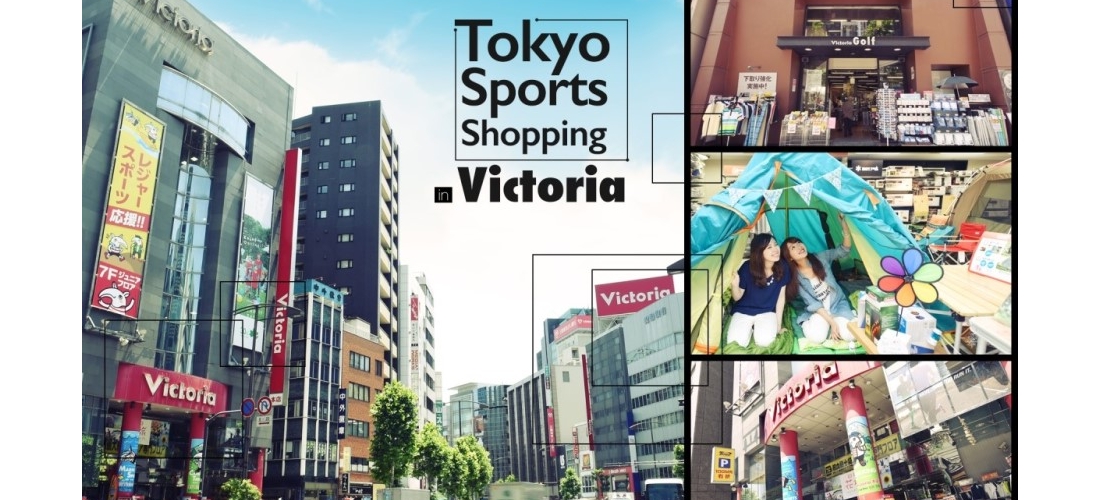
CONTENTS
With the seasons and weather changes, we often see women wearing a variety of fashionable scarves as an added fashion item to keeping them warm. Even if it isn't freezing outside but you want just something light when it's chilly out, makes not only scarfs but shawls a MUST HAVE item for many.
Scarfs are usually the more popular item to buy, however, with the delicacy and more functional purpose of shawls, they are now becoming a popular fashion item here in Japan. Unlike the scarf, thanks to the material and rectangular cut of the shawls, various ways of wearing it are possible. Even in modest fashion, one shawl can change your look drastically.
Japan’s Fashionable Area, Aoyama
When talking about "Tokyo's fashion district", Aoyama is one of the top places to be mentioned.
In the middle of Harajuku and Omotesando, Aoyama is not only a favorite for locals but full of foreign tourists from various countries.
Today's article is about introducing a specialty shawl store that sells beautiful and one of a kind MADE IN JAPAN shawls.
This special store is called, Koma aoyama.
Koma aoyama, “An Artisanal Production in the Traditions of the Past”
Unlike big brands using completely industrialized production methods, Koma aoyama continues to perpetuate traditions using artisanal weaving methods. Each thread is chosen with care in order to create shawls with the irreproachable quality. Soft to the touch, this work of artisans results in unique products containing finesse and ease of use.
It is a concept that yarn and thread gently overlap without forcibly pulling. Thanks to that, if you have a little hole or dent, gently stroke the thread, and it will return to its original form. Actually, since this low-speed weaving loom machine isn't manufactured anymore, craftsmen make the shawls directly by hand which requires skills obtained from many years of experience.
Koma aoyama’s Popular Shawls: Best 3
It may be obvious, but not all shawls are the same. Depending on what materials are combined and how it's weaved, you get different distinctions and designs. It can be quite difficult to choose which shawl will perfect you, which is why we've decided to present you 3 collections which makes the success of Koma aoyama:
② Mucc Denim Collection
③ Mesh Collection
Although a shawl is still a shawl,
each collection has its particularity.
The Mashma Collection is adored for its sober appearance but
especially for the softness of the fabric
which is smooth like a marshmallow!
Also perfect for warming you up,
you can easily store it in your bag until you need it.
The shawls in this collection are light,
but since cashmere is included it retains heat well
and remains durable.
⦿Mashma Collection
Silk 60% · Cashmere 40%
In a very different fashion,
the Mucc Collection uses denim as its source of fabric.
Despite what you may think the denim shawls are very gentle.
The denim gives a unique and vintage look,
and compared to other Koma aoyama collections,
you feel like you're being bundled up nicely.
The overall style of the shawl looks great with any sort of fashion coordination.
⦿Mucc Collection
100% denim
100% cashmere
Various Ways to Wear a Shawl ⦿ Koma aoyama Shawls
Compared to a splendid and short scarf, Koma aoyama shawls are long and come in various colors.
Which means you can enjoy a variety of ways to wear your new shawl~
Same Shawl, Different Look
but decide whether to show the shawls designs or not!
Traditional shawl fashion of draping them over your shoulders is also an option.
Just like wearing them as a scarf,
deciding to show or "hide" the shawl's designs are up to you!
How to Get Your Own Japanese Shawl!
Unfortunately, Koma aoyama doesn't deliver overseas.
You can go directly to the store or get it through Japanese domestic delivery.
Recently, it seems that there are also quite a few of people
who order online and have the shawls sent to their accommodation's reception.
For those who wish to buy online and ship within Japan,
please check the URL of the online store below.
No matter how many times you internet shop,
seeing the products first hand for yourself is ALWAYS better.
Especially when dealing with such high quality MADE IN JAPAN items,
you'll want to go for yourself if possible.
Then there you can coordinate various of shawls
according to your personal style.
Internet inquiry page of Koma aoyama store
Inquiry page
*お名前 = Name (in English is fine)
メールアドレス = Email address
お問い合わせタイトル = Inquiry title
お問い合わせ内容 = Content of inquiry
*If requesting to make a reservation to visit the store,
be sure to include desired date and time
Shawls Made with the Finest Materials and Techniques of Craftsmen
Taking a look at the fashion side of Japan, this article introduced a beautiful fashion accessory that shows off Japan's handcraft expertise. Japan's shawl brand Koma aoyama exquisitely matched the three stages of rare traditional method, highest class material, and craftsmanship technique.
🏢5-10-1 Futaba Bld. 4F, Minamiaoyama, Minato, Tokyo
Google Maps
📞03-6419-7710
⏰Irrigular holidays (requesting inquiries)
📧info@koma-company.jp
🚉Omotesando Station, 2min walk from exit B1
Tokyo Metro Ginza Line, Chiyoda Line, Hanzomon Line
(Inbetween Starbucks and Kua 'Aina)
💻Official website (JPN)
Official Instagram
Koma Online Store
Details
NAME:Koma aoyama
MAP
東京都港区南青山5-10-1 4F
ACCESS:Omotesando Station, 2min walk from exit B1
https://cometojapankuru.blogspot.com/2018/06/japan-fashion-and-tokyo-shopping-high.html
CONTACT TEL:03-6419-7710
CONTACT EMAIL:info@koma-company.jp
PROFILE
Follow us @Japankuru on Facebook, Instagram, and Twitter!
COMMENT
FEATURED MEDIA
VIEW MORE
Narita Airport Tax-Free Shopping List 나리타공항 면세점 쇼핑 리스트 #pr #calbee #jagapokkuru #japanesesnacks #japanesefood #japanesesouvenir #japantravel #japantrip #naritaairport #hokkaido #나리타국제공항 #나리타공항면세점 #나리타공항면세점과자 #일본공항면세점 #일본기념품쇼핑리스트추천 #공항면세점쇼핑리스트 #일본과자추천 #면세점일본과자 #일본기념품추천 #일본과자 #자가폿쿠루 #일본간식 #일본과자쇼핑 #일본면세점필수템 #일본기념품쇼핑

Asakusa's Sanja Matsuri, one of the biggest festivals in all of Tokyo, is almost here! Make sure you check out the festival route so you don't miss all the festivities this May. #asakusa #sanjafestival #sanjamatsuri #asakusashrine #sensoji #sensojitemple #japanesefestival #shintoshrine #japaneseculture #tokyo #tokyotrip #tokyotravel #asakusasightseeing #matsuri #japantrip #japantravel #springinjapan #tokyotravel #japankuru #산자마츠리 #아사쿠사 #일본마츠리 #일본여행 #일본5월

Odaiba's DiverCity Tokyo Plaza is home to the famous real-size 20m-tall Unicorn Gundam, and the popular shopping center has even more Gundam on the inside! Check out the Gundam Base Tokyo on the 7th floor for shelves upon shelves of Gunpla, and the Gundam Base Tokyo Annex on the 2nd floor for cool anime merchandise. Both shops have tons of limited-edition items! #pr #odaiba #tokyo #tokyotrip #japantrip #japantravel #PR #divercity #divercitytokyoplaza #tokyoshopping #gundam #unicorngundam #gundambasetokyo #anime #otaku #gunpla #japankuru #오다이바 #다이바시티도쿄 #오다이바건담 #건담 #일본건담 #건프라 #건담베이스도쿄

Evangelion, in miniature!? Tokyo's SMALL WORLDS Miniature Museum is actually a must-see for anime lovers, thanks to the tiny Evangelion Hangar and Tokyo-III... plus a whole universe of other scenes both real and fictional. #smallworlds #smallworldstokyo #tokyotrip #tokyotravel #evangelion #eva #anime #miniature #miniatures #animefigure #japantrip #japantravel #에반게리온 #스몰월드 #에반겔리온 #スモールワールズ #오다이바 #아리아케

Have you sat down for a snack at Sumida Aquarium yet? This aquarium next to Tokyo Skytree is known for its penguins and garden eels, but we can't get enough of their cute snacks! There are lots of good seats around the aquarium, too, so it almost feels like one big cafe. 🐧 • Find out more at Japankuru.com! (Link in bio.) • #japankuru #sumidaaquarium #skytree #tokyoskytree #solamachi #sumida #tokyo #tokyotrip #tokyotravel #aquarium #japanesesweets #themecafe #すみだ水族館 #Japan #日本 #일본 #Japon #ญี่ปุ่น #Japão #япония #japantravel #日本旅行 #日本旅遊 #japan_of_insta #japantrip #traveljapan #japan🇯🇵 #igerstokyo #explorejapan

For anime fans, the Evangelion areas at Small Worlds Miniature Museum are a must see! The tiny miniature people in the Evangelion Hangar look like ants beneath the moving Unit-01, Unit-00, and Unit-02! And over in Tokyo-III, characters like Shinji, Rei, and Katsuragi live life on a miniature scale. #odaiba #tokyo #tokyotrip #japantrip #japantravel #ariake #smallworlds #miniaturemuseum #smallworldstokyo #tokyotravel #evangelion #eva #anime #miniature #miniatures #animefigure #japankuru #스몰월드 #에반게리온 #오다이바 #오다이바관광 #오다이바스몰월드 #미니어쳐

